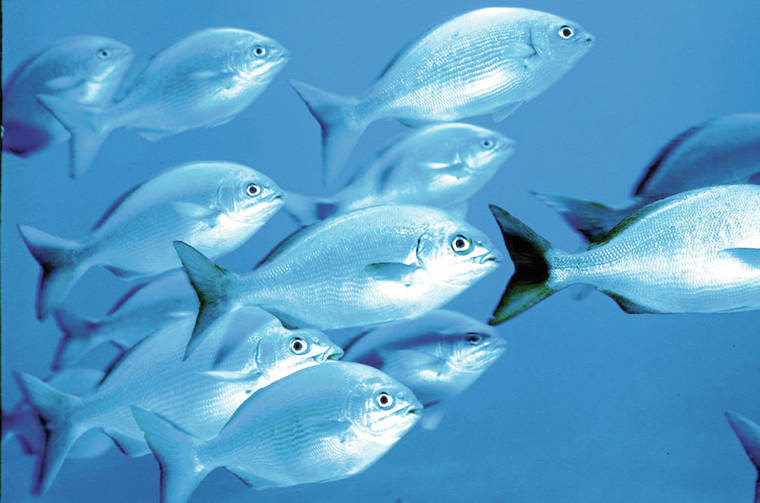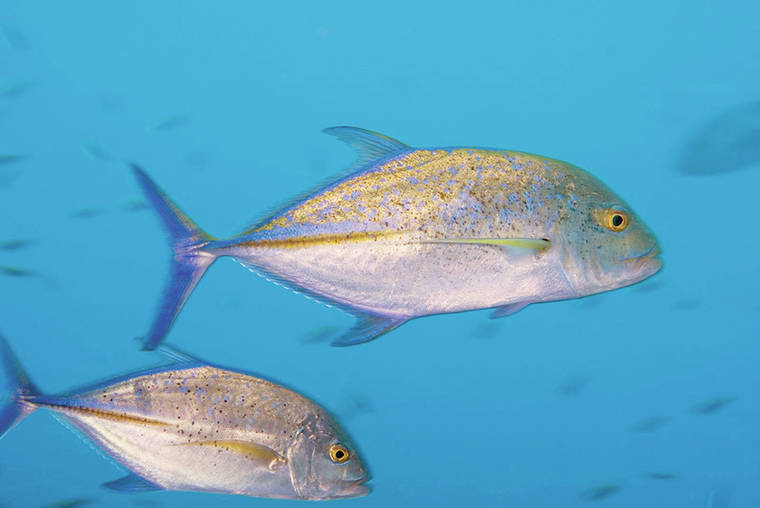LIHU‘E — A recent comprehensive study has found Hawai‘i’s nearshore waters need more effective management, and that a diverse, integrated system of marine-management areas can help restore the state’s declining coral-reef fisheries and boost the resilience of coral reefs in a changing climate.
Well-designed marine-management areas are a proven tool that can restore coral-reef fisheries, increase coastal protection and provide recreational, cultural and economic opportunities, the study concludes.
The study found that while Hawai‘i has many marine-management areas, most are too small and allow some form of human use within their boundaries that can limit their ability to restore depleted fisheries.
“We need to improve the marine-management areas we already have and effectively manage additional areas if we are to protect and restore Hawai‘i’s unique and valuable marine environment,” said University of Hawai‘i fisheries researcher Dr. Alan Friedlander, the study’s lead author.
“That includes setting aside some areas where fishing is prohibited, because we know that replenishes fish stocks. It also includes areas where the state co-manages resources with coastal communities that want to implement more-sustainable, traditional management practices,” he said.
The study provides critical information for the state’s initiative to effectively manage 30% of Hawai‘i’s nearshore waters by 2030.
Key in reaching this goal is to create an ecologically-connected network of marine-management areas that can rebuild and sustain productive nearshore fisheries. According to Friedlander, reef-fish populations have declined dramatically in Hawai‘i over the last century, with some important food-fish populations reduced by more than 90%.
Hawai‘i’s marine-management areas vary in size and levels of governance, enforcement and effectiveness. They comprise only 5% of state waters, extending out to three nautical miles from the shore, limiting their ability to sustain fish abundance across the state.
Of that 5%, fully and highly protected waters cover only 1.4% of nearshore areas, mostly within the Kaho‘olawe Island Reserve. Less than 0.1% are within marine protected areas, which provide full protection for fish to grow large and reproduce.
Studies show that when fish can mature in protected waters, they grow much larger and can produce exponentially more eggs than smaller, younger fish.
The larger fish and their larvae can spill over into neighboring areas that are open to fishing. “Many fishers already know this, and engage in what’s called ‘fishing the line’ between MPAs and open fishing areas,” Friedlander said. “In general, fishers can get the greatest benefit by protecting the largest spawning fishes in larger no-fishing areas.”
Established in 1983, the Pupukea Marine Life Conservation District on O‘ahu’s North Shore was expanded seven-fold in 2003, and saw a dramatic increase in food-fish biomass.
“I can’t describe the feeling of seeing more and bigger fish in the MLCD after years of seeing no visible change,” said Jenny Yagodich, Malama Pupukea-Waimea education director and Makai Watch coordinator helping to co-manage the MLCD with the state Department of Land and Natural Resources.
“Fisherfolk have expressed that the areas next to the MLCD are now abundant with fish thanks to spillover, and fishing is better there now than it was prior to protection.”
Recent surveys in the Molokini Reserve offshore of Maui found more fish and larger predators (which are a sign of a healthy ecosystem) such as ulua, omilu and reef sharks had returned in the few months since boat traffic was restricted due to COVID-19.
According to Friedlander, who was part of the survey team, “While these increases are likely temporary and will probably disappear once visitors return to Molokini, our surveys show just how quickly our marine systems can rebound if given a chance.”
Larger marine-management areas protect a diverse range of habitats and help maintain the health and function of marine ecosystems.
They provide protection for a wider range of species and serve as a buffer against environmental fluctuations and disturbances.
With climate change and increased coral bleaching already occurring in the islands, establishing more and larger management areas will help protect the state’s nearshore resources into the future, the study says. The size and boundaries of current marine-management areas can be designed as effective components of a larger network.
“Characteristics of Effective Marine Protected Areas in Hawai‘i” was published in the journal Aquatic Conservation: Marine and Freshwater Ecosystems. Co-authors with Friedlander are Mary Donovan and Whitney Goodell of the University of Hawai‘i, and Haruko Koike and Paul Murakawa of the DLNR Division of Aquatic Resources.



